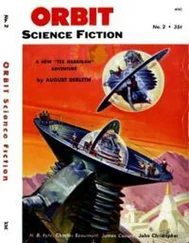To these were added Washington’s growing disdain for international treaties, its unique perspective on everything from global warming to international law, and above all its partisan stance in the Israel-Palestine crisis. In none of these instances did American policy completely reverse direction following the election of President George W. Bush in 2000; the Atlantic gap had begun to open up well before. But the new Administration’s harsher tone confirmed for many European commentators what they already suspected: that these were not mere disagreements on discrete policy issues. They were mounting evidence of a fundamental cultural antagonism.
The idea that America was culturally different—or inferior, or threatening—was hardly original. In 1983 the French Culture Minister Jack Lang warned that the widely watched television series Dallas represented a serious threat to French and European identity. Nine years later, when Jurassic Park opened in French cinemas, he was echoed to the letter by one of his conservative successors. When EuroDisney was launched in the spring of 1992, the radical Parisian theatre director Ariane Mnouchkine went a step further and warned that the amusement park would prove ‘a cultural Chernobyl’. But this was the familiar small change of intellectual snobbery and cultural insecurity, mixed—in France as elsewhere—with more than a little chauvinist nostalgia. On the fiftieth anniversary of D-Day, Gianfranco Fini, leader of the ex-Fascist National Alliance Party in Italy, told the Italian daily La Stampa that ‘I hope I won’t be thought to be justifying Fascism if I wonder whether with the American landings Europe didn’t lose a part of her cultural identity’.
What was new about the situation at the beginning of the twenty-first century was that such sentiments were becoming commonplace, and had moved from the intellectual or political fringes deep into the center of European life. The depth and breadth of anti-American feeling in contemporary Europe far exceeded anything seen during the Vietnam War or even at the height of the peace movements of the early 1980s. Although a majority in most countries still believed that the Atlantic relationship could be preserved, three out of five Europeans in 2004 (many more than that in some countries, notably Spain, Slovakia and, strikingly, Turkey) thought strong American leadership in the world to be ‘undesirable’.
Some of this could be attributed to widespread dislike of the policies and personof President George W. Bush, in contrast to the affection in which Bill Clinton, his predecessor, had been held. But many Europeans had been angry at President Lyndon Johnson in the late Sixties; yet their feelings about the war in South-East Asia had not typically mutated into dislike of America or Americans in general. Forty years later there was a widespread feeling, all across the continent (and very much including the British, who angrily objected to their Prime Minister’s enthusiastic identification with his American ally) that there was something wrong with the kind of place that America was becoming—or, as many now insisted, had always been.
Indeed, the presumptively ‘un-American’ qualities of Europe were fast becoming the highest common factor in European self-identification. European values were contrasted with American values. Europe was—or should strive to be—everything that America wasn’t. In November 1998 Jérôme Clément, the President of Arte , a Franco-German television station devoted to culture and the arts, warned that ‘European creativity’ was the only bulwark against the sirens of American materialism and pointed to post-Communist Prague as a case in point, a city in danger of succumbing to ‘une utopie libérale mortelle’ (‘a deadly liberal utopia’): in thrall to deregulated markets and the lure of profit.
In the immediate post-Communist years Prague, like the rest of eastern Europe, would doubtless have pleaded guilty to a longing for all things American, from individual freedom to material abundance. And no-one visiting eastern European capitals, from Tallinn to Ljubljana, could miss the aggressive new élite of snappily dressed young men and women, zipping busily to appointments and shopping expeditions in their expensive new cars, enjoying the deadly liberal utopia of Clément’s nightmares. But even eastern Europeans were taking their distance from the American model: partly in deference to their new association with the European Union; partly because of growing aversion to aspects of American foreign policy; but increasingly because as an economic system and model of society the United States no longer seemed so self-evidently the way of the future. [409]
Extreme anti-Americanism in eastern Europe remained a minority taste. In countries like Bulgaria or Hungary it was now an indirect, politically acceptable way of expressing nostalgia for national Communism—and, as so often in the past, a serviceable surrogate for anti-Semitism. But even among mainstream commentators and politicians it was no longer commonplace to hold up American institutions or practices as a source of inspiration or an object to be emulated. For a long time America had been another time—Europe’s future. Now it was just another place. Many young people, to be sure, still dreamed of going to America. But as one Hungarian who had worked for some years in California explained to an interviewer:‘America is the place to come when you are young and single. But if it is time to grow up, you should return to Europe’.
The image of America as the perennial land of youth and adventure—with twenty-first-century Europe cast as an indulgent paradise for the middle-aged and risk-averse—had wide currency, especially in America itself. And indeed Europe was growing older. Of the twenty countries in the world in 2004 with the highest share of people over sixty, all but one were in Europe (the exception was Japan). The birth rate in many European countries was well below replacement levels. In Spain, Greece, Poland, Germany and Sweden, fertility rates were below 1.4 children per woman. In parts of Eastern Europe (Bulgaria and Latvia, for example, or Slovenia) they were closer to 1.1, the lowest in the world. Projected forward through 2040 these data suggested that many European countries could expect population to fall by one fifth or more.
None of the traditional explanations for fertility decline seemed to account for Europe’s incipient demographic crisis. Poor countries like Moldova and rich ones like Denmark faced the same challenge. In Catholic countries like Italy or Spain, young people (married and unmarried alike) often lived in their parents’ homes well into their thirties, whereas in Lutheran Sweden they had their own homes and access to generous levels of state-funded child-support and maternity leave. But although Scandinavians were having slightly more children than Mediterranean Europeans, the differences in fertility were less striking than the similarities. And the figures everywhere would have been lower still but for immigrants from outside Europe, who boosted the overall population numbers and had a much greater propensity to procreate. In Germany in 1960 the number of children born with one foreign parent was just 1.3 percent of the total for the year. Forty years later that figure had risen to one child in five.
The demographic scene in Europe was not actually so very different from that across the Atlantic—by the start of the new millennium the indigenous American birth-rate had also fallen below replacement levels. The difference was that the number of immigrants entering the US was so much larger—and they were disproportionately young adults—that overall fertility in the US looked set comfortably to outdistance that of Europe for the foreseeable future. And although the demographic troughs meant that both America and Europe might have trouble meeting public pension and other commitments in the decades ahead, the welfare systems of Europe were incomparably more generous and thus faced the greater threat.
Читать дальше












